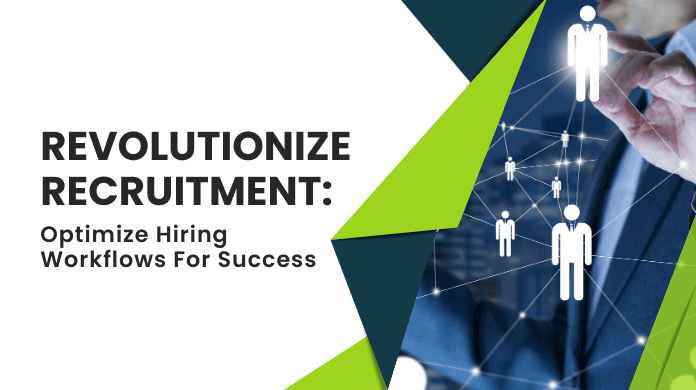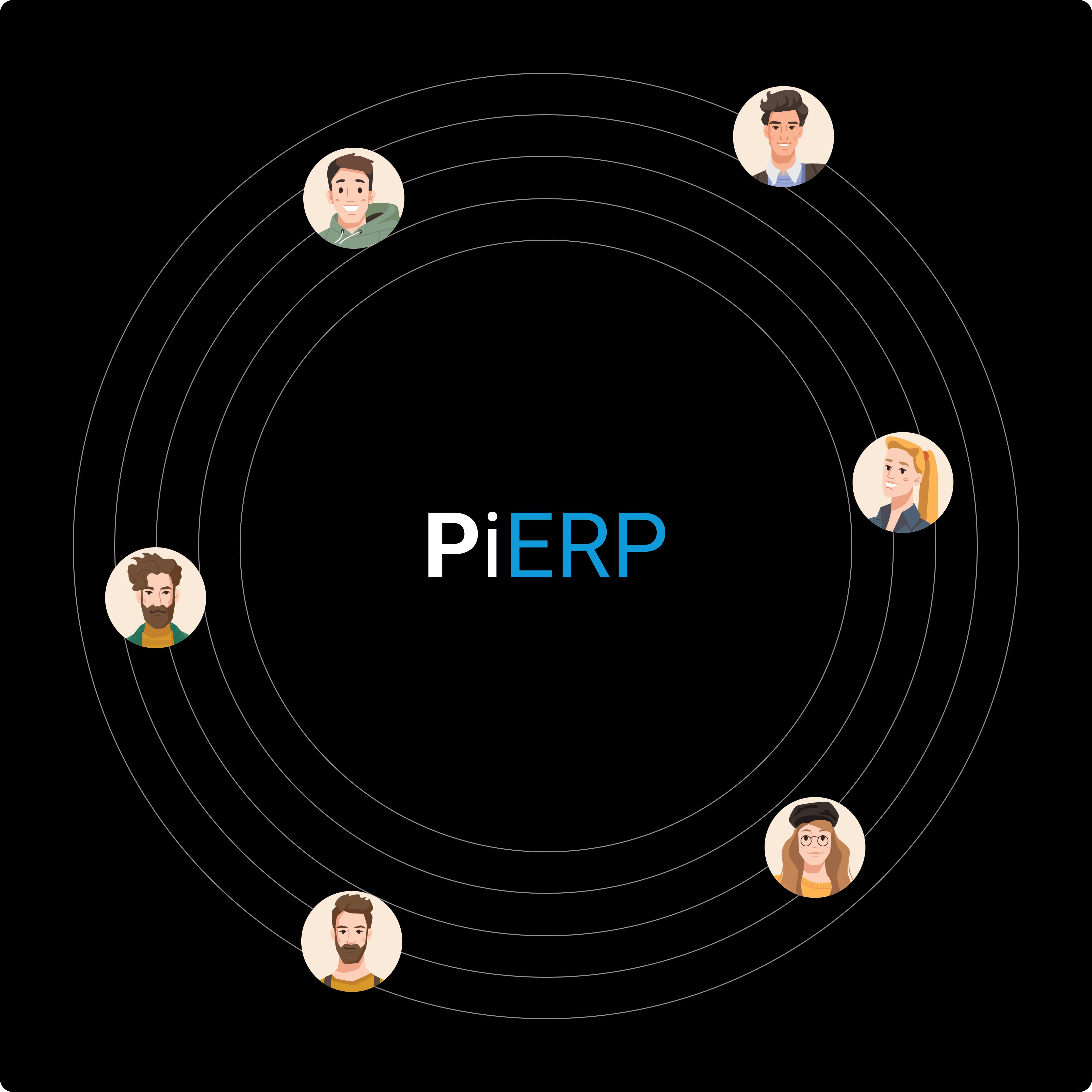Recruiting the right talent is a cornerstone of organizational success, but in today's dynamic business landscape, traditional hiring processes often fall short. In the quest to stay competitive and attract top-tier candidates, companies must embark on a journey of transformation – one that revolutionizes recruitment by optimizing hiring workflows.
This article delves into the intricacies of this paradigm shift, exploring the inherent challenges of conventional methods while spotlighting the myriad benefits of embracing a more streamlined and efficient approach. By reimagining recruitment strategies, organizations can not only enhance operational efficiency and reduce costs but also elevate the candidate experience, thereby fostering a positive employer brand reputation.
Join us as we uncover the key components, implementation strategies, and future trends that define the quest to revolutionize recruitment and propel businesses towards unparalleled success.
Understanding Traditional Hiring Processes
Understanding traditional hiring processes is essential for grasping the need for revolutionizing recruitment strategies. Historically, organizations have relied on conventional methods such as posting job advertisements, manually screening resumes, conducting interviews, and making hiring decisions based on limited information and gut instinct.
While these practices have been the norm for decades, they come with inherent limitations and challenges. Firstly, the process is often time-consuming, with recruiters spending hours sifting through resumes and coordinating interviews. Secondly, relying on subjective judgments can introduce bias into the decision-making process, potentially overlooking qualified candidates or favoring those who fit a certain profile.
Moreover, traditional hiring methods may result in a poor candidate experience, as applicants endure lengthy wait times and unclear communication. By understanding the shortcomings of traditional processes, organizations can recognize the imperative for change and embark on the journey towards optimizing hiring workflows for greater efficiency, effectiveness, and fairness.
Benefits of Optimized Hiring Workflows
Optimized hiring workflows offer a multitude of benefits for organizations seeking to modernize their recruitment processes.
Firstly, these streamlined workflows enhance efficiency by reducing the time and resources required for talent acquisition. By automating repetitive tasks and leveraging technology for sourcing and screening candidates, companies can significantly decrease time-to-fill metrics and expedite the hiring process.
Secondly, optimized workflows lead to cost savings, as organizations minimize reliance on external recruiters and allocate resources more judiciously
Additionally, these streamlined processes result in a more positive candidate experience, fostering goodwill and enhancing the organization's employer brand reputation.
Overall, by embracing optimized hiring workflows, companies can gain a competitive edge in attracting top talent while simultaneously improving operational efficiency and reducing recruitment costs.
Key Components of an Optimized Hiring Workflow
Key components of an optimized hiring workflow encompass a comprehensive set of strategies and practices aimed at streamlining the recruitment process and maximizing its effectiveness.
Firstly, preparing detailed and accurate job descriptions is crucial, as it sets clear expectations for the role and attracts candidates who possess the necessary skills and qualifications. Leveraging technology for sourcing candidates is another essential component, utilizing platforms such as job boards, social media, and applicant tracking systems to reach a broader pool of potential hires. Streamlining applicant tracking systems (ATS) is vital for managing candidate data efficiently, facilitating communication, and tracking the progress of applicants throughout the hiring process.
Implementing structured interviews is another critical aspect of an optimized hiring workflow, ensuring consistency and fairness in the evaluation process while minimizing bias. Additionally, utilizing data analytics for decision-making enables organizations to make informed hiring choices based on objective metrics and insights derived from candidate data. Furthermore, incorporating automation into various stages of the recruitment process, such as resume screening and scheduling interviews, enhances efficiency and reduces administrative burdens on recruiters.
Employer branding also plays a significant role in an optimized hiring workflow, as it helps organizations attract top talent by showcasing their company culture, values, and opportunities for growth. By cultivating a compelling employer brand, companies can differentiate themselves from competitors and appeal to candidates who align with their organizational ethos.
Finally, fostering collaborative hiring practices, which involve engaging various stakeholders in the recruitment process, promotes alignment between hiring managers, HR professionals, and other key decision-makers, leading to better-informed hiring decisions and increased buy-in from team members.
Implementing Automation in Recruitment
Automation plays a crucial role in revolutionizing recruitment processes. By harnessing the power of AI and machine learning, organizations can automate repetitive tasks such as resume screening and scheduling interviews. This not only saves time but also improves the accuracy of candidate selection and reduces bias in decision-making.
Leveraging Employer Branding
Building a strong employer brand is essential for attracting top talent. Organizations should invest in showcasing their company culture, values, and opportunities for growth. By establishing a compelling employer brand, companies can differentiate themselves from competitors and attract high-quality candidates who align with their organizational values.
Collaborative Hiring Practices
Incorporating collaborative hiring practices involves involving various stakeholders in the recruitment process, including hiring managers, team members, and HR professionals. This ensures that hiring decisions are well-informed and aligned with the organization's goals and values. Additionally, encouraging cross-functional collaboration fosters a sense of ownership and accountability among team members.
Continuous Improvement and Feedback Loop
Continuous improvement is key to maintaining an optimized hiring workflow. Organizations should establish feedback mechanisms to gather insights from candidates, hiring managers, and other stakeholders. By soliciting feedback and iterating on processes, companies can continuously refine their recruitment strategies and adapt to evolving market dynamics.
Overcoming Challenges and Obstacles
While the benefits of optimized hiring workflows are undeniable, organizations may face challenges in implementing these changes. Common obstacles include resistance to change from stakeholders, technological disruptions, and cultural shifts within the organization. However, by proactively addressing these challenges and fostering a culture of innovation, companies can successfully navigate the transition to optimized hiring workflows.
Future Trends in Recruitment
Looking ahead, several trends are poised to shape the future of recruitment. Predictive analytics and forecasting will enable organizations to anticipate hiring needs and proactively source candidates. Virtual reality and gamification will revolutionize the candidate experience, allowing applicants to engage with companies in immersive ways. By embracing these trends, organizations can stay ahead of the curve and attract top talent in a rapidly evolving landscape.
Conclusion
In conclusion, optimizing hiring workflows is essential for revolutionizing recruitment and driving organizational success. By embracing technology, fostering collaboration, and prioritizing candidate experience, companies can streamline their processes, attract top talent, and gain a competitive edge in the market. By continuously iterating on their recruitment strategies and staying abreast of emerging trends, organizations can position themselves for long-term success in the ever-evolving world of talent acquisition.






